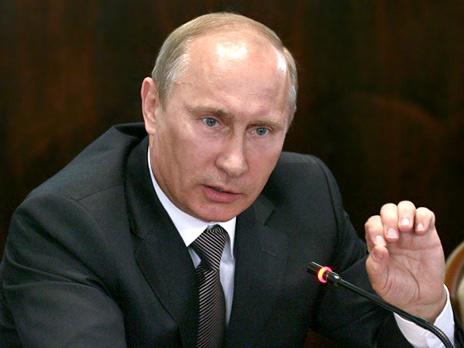Thoughts about Putin’s article on Eurasian Union

Vladimir Putin, the prime-minister of the Russian Federation has written an article published in Izvestia with the title: „The future in the making”. In his proposal he suggested a new integration among the countries located between Europe and the Far East. This organization would emerge as a new power center in the international arena. He named his project as Eurasian Union. The name refers unequivocally to the European Union which he described in his article as a very good example for regional cooperation. With all the experience of the EU and other international regional institutions such as NAFTA, APEC, etc. it can be much easier to avoid a lot of mistakes and to fasten the integration. In the CIS during the last two decades there have been several initiatives to create closer ties between the countries like the Union State of Russia and Belarus, the Collective Security Treaty Organization, the Eurasian Economic Community, the Customs Union and finally the Common Economic Space. The trends in the post-soviet space clearly show that finally most of the countries realized the fact that in the globalized financial-economical system their only opportunity to somehow keep the pace with the newly emerging economies is to stick together and develop a larger community based on mutual interests.
The formation of such a community from historical point of view can be very useful and logical as the cultural heritage, language and history made this countries unified during the last centuries, first under the Russian tsar and later in the Soviet Union. The most important thing in this perspective in my opinion is the common language which is a very good opportunity to form a new emerging bloc of countries located in the Eurasian territories. The knowledge of Russian language is still very well spread in the former republics of the Soviet Union, so not only the work of international organizations is easier but the everyday communication among businessmen and ordinary citizens is much smoother and won’t need any complementary measures by the governments. Another important factor is the money saved compared for instance to the European Union where every regulation and other legislative document should be translated into 23 languages. Common cultural heritage and history also serves as an important integrational factor.
If we look back in history, the political potential for this reunion of states can be seen very clearly as well. Even taking into account the fact that Putin wrote in his article that the Eurasian Union won’t be the successor of the Soviet Union it is inevitable to understand the resemblance and to acknowledge that all the republics together had formed one of the world’s largest empire in military, economy and political power in the same time. Basically the Soviet Union was the conglomerate of all these republics, which means that the potential of this geographical unit is inspired to become a great power. We can’t compare the Soviet Union to the Eurasian Union but they have the same territories and geopolitical possibilities. It’s very difficult to find the best way exploit these capacities but this new idea according to Putin can help these countries to step up in the international arena and become significant players in the world politics. The geopolitical location of the Eurasian countries is very favorable as they have in their neighborhood the emerging economies of the Far East (China, South-Korea, etc.), the eastern borders of the European Union and also in a larger perspective they are not far from the Middle East. The available natural resources give these countries a great opportunity to develop their industries even without importing raw materials from the outside world.
The economical factor is the most difficult one in the case of the Eurasian Union. The largest problem is that the economies of these countries are highly relying on the export of raw materials therefore they are depending on the prices in the world market. The processing industry is not developed enough. The added value of the industry is very law especially according to the well developed economies of the West. The first challenge in this field is modernization. The two most important tasks are the import of new technologies, know-how and the investment in education to develop the human resources. With these two elements the next step would be to invest in research and development. The economic trends are showing that the future is in innovative new technologies. This can be essentially important if this region would like to become a bridge between the Far East and Europe. To build a logistical liason in this part of the World, the implementation of cutting edge solutions are inevitable. If the community of these countries will be able to develop this new transportation and telecommunication mega structure than vast amount of foreign direct investment will flow in to the region.
During the last decade in the recent history of Russia we can notice a rising tendency. The development of Russia economically was largely contributed by the favorable oil prices on the world market but also to the action of the government. From the point of view of an integration process it’s very important to have an aspect of the economy or politics which is rising dynamically because those can become later the engine of the future integration. Structuring an international organization, especially a complex one with supranational identity is very costly which leads to the question of financing. The cooperation will obviously cut the spending of these countries but to form all needed institutions and create and implement all the necessary laws and regulations will be much more expensive. Therefore before founding this Union the leaders have to make sure who will pay and how much for the process. To those countries that are more adaptable and competitive the integration will serve a lot better and in the beginning for the less developed countries it can be very hard to compete with the free flow of capital and goods.
As in this case we are talking about gigantic territories with comparably small population the demographic policy can raise a lot of questions. Naturally as the result of free movement even more migrants will leave their home to look for better opportunities and higher living standards. But if we look at the map for a second we can see that people living in the worst conditions are in Central Asia and Siberia. The free movement can leave entire countries nearly empty and also turn over the ethnical composition of other countries. In my opinion a very accurate and long term plan have to be prepared to cope with the possible outcomes of free movement of labor forces.
During the presidency of Dmitry Medvedev the word “modernization” had great importance. As a result it seems that all the projects initiated by the president had their effects even if they are coming very slowly but in my opinion if the investment into innovation will continue flowing Russia can achieve their goals in the long run. This integration plan can’t be fulfilled without the evolution of high technologies. For example the idea to build a transportation bridge between China and Europe can be a remunatory investment for Russia and Central Asia. According to previous calculations the cost of shipping are twice as much as to transport goods by train and the time spent can be reduced threefold without any risks. Not to mention the new jobs created by this project. A whole structure can be based on this project in the future development of the region. It can also give the Eurasian Union a profile as a center of logistics between Europe and Asia.
It is also very important how easily these countries can find compromises and what will be the image of the Eurasian Union in the outside world. The Eurasian Union has to act as a unit to be treated like a real great power. They need to understand that to emerge from their actual situation they have to find a field where they can pass the others and have relatively advantageous position. To anticipate the global economy is impossible but to find out the trends and choose a sector in which there are some good opportunities is a question of human resources. In order to have the best specialists, these countries have to invest in education to make their universities attractive for innovators.
These countries at the moment possess all the necessary resources to establish a prosperous Eurasian Union but they have to aware of the fact that nothing comes easy and the results of the integration may have some unforeseeable side effects as well with which they have to cope. Nevertheless cooperation on the regional level is a good initiative and it always had positive effects in the history before.
Written by Joseph Rozsa (Йожеф Рожа)
|
|
пт, 11/11/2011 - 16:47
|
Если вы незарегистрированный пользователь, ваш коммент уйдет на премодерацию и будет опубликован только после одобрения редактром.





Комментировать